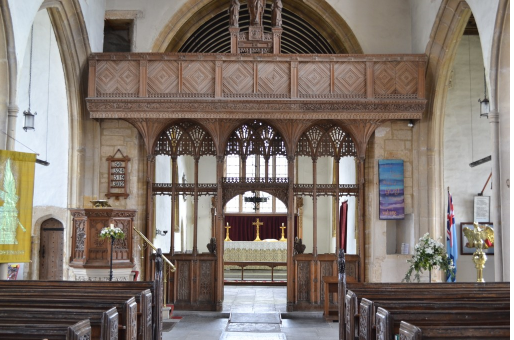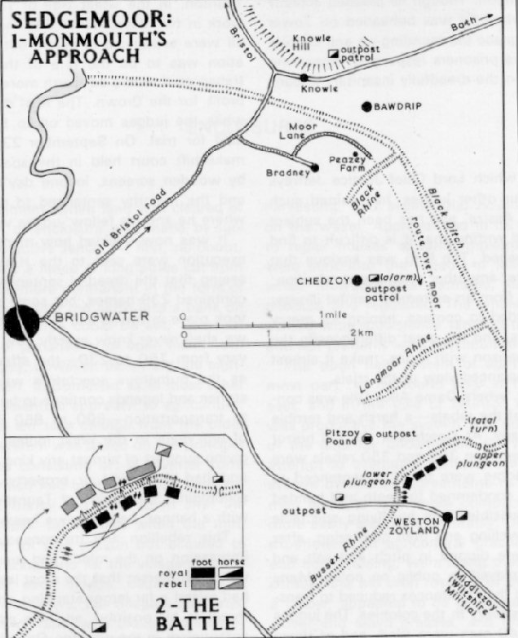





STOKE ST MARY AND DISTRICT HISTORY GROUP
BATTLE OF SEDGEMOOR
The Monmouth Rebellion of June-
The Battle of Sedgemoor was the last pitched battle to be fought on English soil. Three days after his defeat, Monmouth was captured and later executed. Hundreds of his supporters suffered at the hands of Judge Jeffreys' Bloody Assizes.
The landscape of the battlefield was similar in character to that of today, with pasture on the moors and arable on the higher ground. The chief difference is the regularity of the drains, which were improved in the late eighteenth century. The Bussex Rhyne had been infilled but is visible on aerial photographs.
Having spent a year in voluntary exile in the Netherlands, Monmouth landed in Dorset in June 1685. Despite a number of setbacks, he had gathered around him an army of 7,000 men by the time he was faced by the royal army near Westonzoyland. Monmouth decided to chance all upon a night attack.
The Church and the Battle of Sedgemoor
The Kings army had been shadowing the rebel forces and on the evening of July 5th 1685 they were camped on the edge of Weston “Island” (Westonzoyland) looking towards Chedzoy and the Polden hills, sheltered behind the now long gone drainage ditch known as the Bussex Rhine. Four regiments of Infantry were drawn up there, cavalry patrolled the moor, and officers found quarters in the village. The commander-

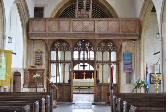
On the night of 5/6 July, Monmouth's rebels advanced. However, they hesitated at the Bussex Rhyne watercourse and instead of rushing the royal army, took it in at a distance in a firefight. All night the forces exchanged musket and cannon fire, but at daybreak the King's army advanced, crossed the Rhyne and forced the rebels to flee. Many were caught and killed in what is now Moor Drove Rhyne.
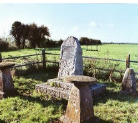
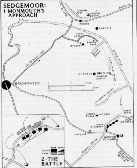
Some 500 prisoners, many of them wounded, were herded into the church. Seventy-

For details of the men from Stoke St Mary who took part in the Rebellion press HERE
